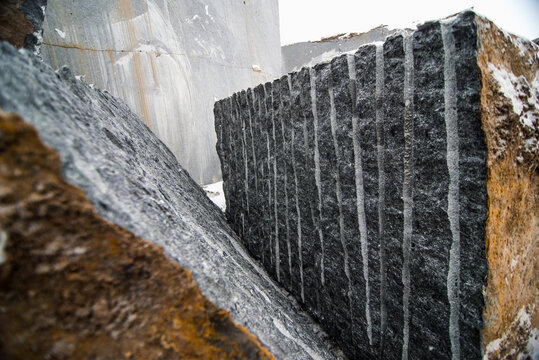Revealing the Mysteries of Granite Quarrying: Where Toughness and Elegance Meet
The world of granite quarrying is a world where the raw toughness of nature merges with human artistry to produce frameworks that stand the examination of time with an air of elegance. From the depths of quarries to the precise sprucing up in workshops, the procedure of changing granite into architectural marvels is a complicated dancing of practice and technology. As we peer into the depths of this ancient craft, we begin to discover the concealed ins and outs that form the really significance of our built environment.
The Origins of Granite Quarrying
In the annals of architectural history, the origins of granite quarrying are shrouded in a tapestry of ancient craftsmanship and geological marvels. Dating back to ancient Egypt and Mesopotamia, the extraction of granite from quarries marked the start of a trip that would at some point lead to the creation of some of the globe's most iconic frameworks.
Granite quarrying's origins can be mapped to the skilled craftsmens that identified the rock's toughness and visual charm. With a combination of primitive tools and large resolution, these very early quarry employees discovered granite blocks that would become the structure blocks of human beings.
As human beings progressed, so did the methods of quarrying granite. The Romans, renowned for their design expertise, established advanced methods for removing granite to build monuments, temples, and roadways that stood the test of time.
The legacy of these old quarrying techniques remains to shape modern-day design, with granite staying a symbol of toughness and sophistication in building projects around the world. (granite quarries in south africa)
Tools of the Quarrying Profession
The development of granite quarrying techniques from old worlds to modern times highlights the vital duty played by the tools of the quarrying sell forming the market's practices. In ancient times, quarrying devices were simple, frequently consisting of blades, hammers, and wedges made from materials like bronze or iron. These devices required substantial manpower and time to remove granite blocks from quarries.

Additionally, the introduction of pneumatically-driven devices and high-powered equipment has actually dramatically lowered the physical labor called for in quarrying procedures, boosting employee security and efficiency. As the quarrying market remains to innovate, the devices of the profession stay at the leading edge of driving development and shaping the future of granite extraction.
Extracting Blocks of Granite
Making use of accuracy machinery and advanced techniques, the removal of granite obstructs from quarries has become an innovative try here procedure in the contemporary quarrying industry. The initial action includes identifying the location and dimension of the granite deposit to identify one of the most reliable extraction method. As soon as an appropriate site is picked, the removal process begins with the boring of holes for the positioning of dynamites. Controlled blowing up techniques are after that utilized to break apart the granite right into workable areas.

Polishing and Completing Techniques
To accomplish a remarkable surface area on granite blocks, proficient artisans use a series of thorough polishing and ending up techniques. After the first extraction and forming procedures, the granite obstructs go through an extensive polishing stage to enhance their all-natural beauty and durability. One typical method made use of in polishing granite is ruby abrasion, where industrial diamonds are made use of to grind and polish the rock to a smooth finish. This procedure not only produces a lustrous surface yet also makes certain uniformity in shade and texture across the granite block.
In enhancement to sprucing up, completing methods are applied to further refine the granite's look. By meticulously picking and using these polishing and completing techniques, artisans can change raw granite obstructs into splendid pieces that display both toughness and sophistication.

Environmental Influence and Sustainability
With the expanding focus on ecological awareness in the industry, granite quarrying practices are progressively looked at for their influence on all-natural sources and long-term sustainability. Additionally, the transportation of granite from quarries to processing facilities produces carbon exhausts, better adding their explanation to ecological degradation.
To mitigate these impacts and guarantee sustainability in granite quarrying, market stakeholders are embracing different procedures. Applying innovative modern technologies to lower power intake and water use, redeeming quarried land for eco-friendly repair, and advertising accountable sourcing methods are some methods being utilized. Certifications such as the Forest Stewardship Council (FSC) and the Management in Power and Environmental Layout (LEED) assistance consumers identify ecologically pleasant granite items.
Final Thought
To conclude, granite quarrying is a process that needs specialized devices and strategies to essence informative post blocks of granite and brighten them to a high degree of coating. While the ecological impact of quarrying can be considerable, efforts are being made to improve sustainability methods in the industry. Generally, granite quarrying is a fragile balance in between utilizing the toughness and beauty of this all-natural stone while decreasing its effect on the setting.
Comments on “The Surprise Treasures: Discovering Granite Quarries in South Africa”